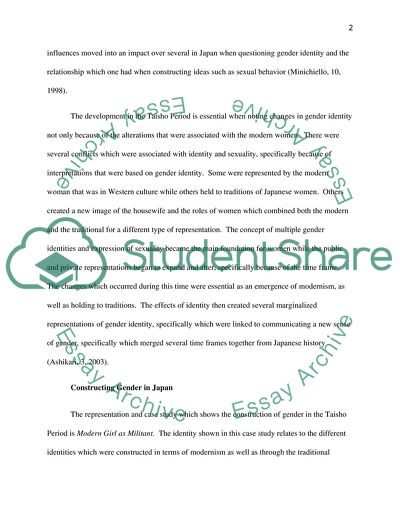Cite this document
(Sex, Gender and Sexuality in Japanese History Essay, n.d.)
Sex, Gender and Sexuality in Japanese History Essay. https://studentshare.org/sociology/1743643-what-forms-does-the-shifting-alignment-of-sex-gender-and-sexuality-take-in-the-various-periods-of-japanese-history-we-have-analysed-thus-far-in-the-course-what-can-we-learn-by-investigating-this-aspect-of-culture-and-society-discuss-in-relation
Sex, Gender and Sexuality in Japanese History Essay. https://studentshare.org/sociology/1743643-what-forms-does-the-shifting-alignment-of-sex-gender-and-sexuality-take-in-the-various-periods-of-japanese-history-we-have-analysed-thus-far-in-the-course-what-can-we-learn-by-investigating-this-aspect-of-culture-and-society-discuss-in-relation
(Sex, Gender and Sexuality in Japanese History Essay)
Sex, Gender and Sexuality in Japanese History Essay. https://studentshare.org/sociology/1743643-what-forms-does-the-shifting-alignment-of-sex-gender-and-sexuality-take-in-the-various-periods-of-japanese-history-we-have-analysed-thus-far-in-the-course-what-can-we-learn-by-investigating-this-aspect-of-culture-and-society-discuss-in-relation.
Sex, Gender and Sexuality in Japanese History Essay. https://studentshare.org/sociology/1743643-what-forms-does-the-shifting-alignment-of-sex-gender-and-sexuality-take-in-the-various-periods-of-japanese-history-we-have-analysed-thus-far-in-the-course-what-can-we-learn-by-investigating-this-aspect-of-culture-and-society-discuss-in-relation.
“Sex, Gender and Sexuality in Japanese History Essay”. https://studentshare.org/sociology/1743643-what-forms-does-the-shifting-alignment-of-sex-gender-and-sexuality-take-in-the-various-periods-of-japanese-history-we-have-analysed-thus-far-in-the-course-what-can-we-learn-by-investigating-this-aspect-of-culture-and-society-discuss-in-relation.


